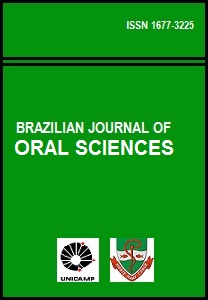Abstract
Aim: To evaluate the radiopacity and microhardness (KHN) of experimental dental adhesives (EX). The experimental adhesive resins of the present study were formulated based on the simplified adhesive system Ambar (FGM). Methods: Five EX with different concentrations of zirconia nanoparticles [0(EX0), 15(EX15), 25(EX25), 30(EX30) e 50%(EX50)] were incorporated in a UDMA/HEMA adhesive (control). Adper Single BondTM 2 (SB, 3M ESPE) was used as a commercial reference. For the radiopacity (n=5), KHN (n=5), adhesive specimens were fabricated using a stainless steel mold. Data were submitted to one-way ANOVA and Tukey´s test (α=0.05). Results: The filler addition on the EX showed radiopacity similar to enamel and higher than SB. The EX25, EX35 and EX50 showed higher KHN values when compared to the commercial SB. EX25, EX35 and EX50 showed higher KHN values when compared to the commercial SB. Conclusions: The results of the present investigation suggest that the addition of zirconia nanoparticles seems to be a good alternative to produce radiopaque adhesives with increased microhardness.
This work is licensed under a Creative Commons Attribution 4.0 International License.
Copyright (c) 2015 Gislaine Cristine Martins, Marcia Margarete Meier, Alessandro Dourado Loguercio, Fabielle Cecchin, Osnara Maria Mongruel Gomes, Alessandra Reis
Downloads
Download data is not yet available.

